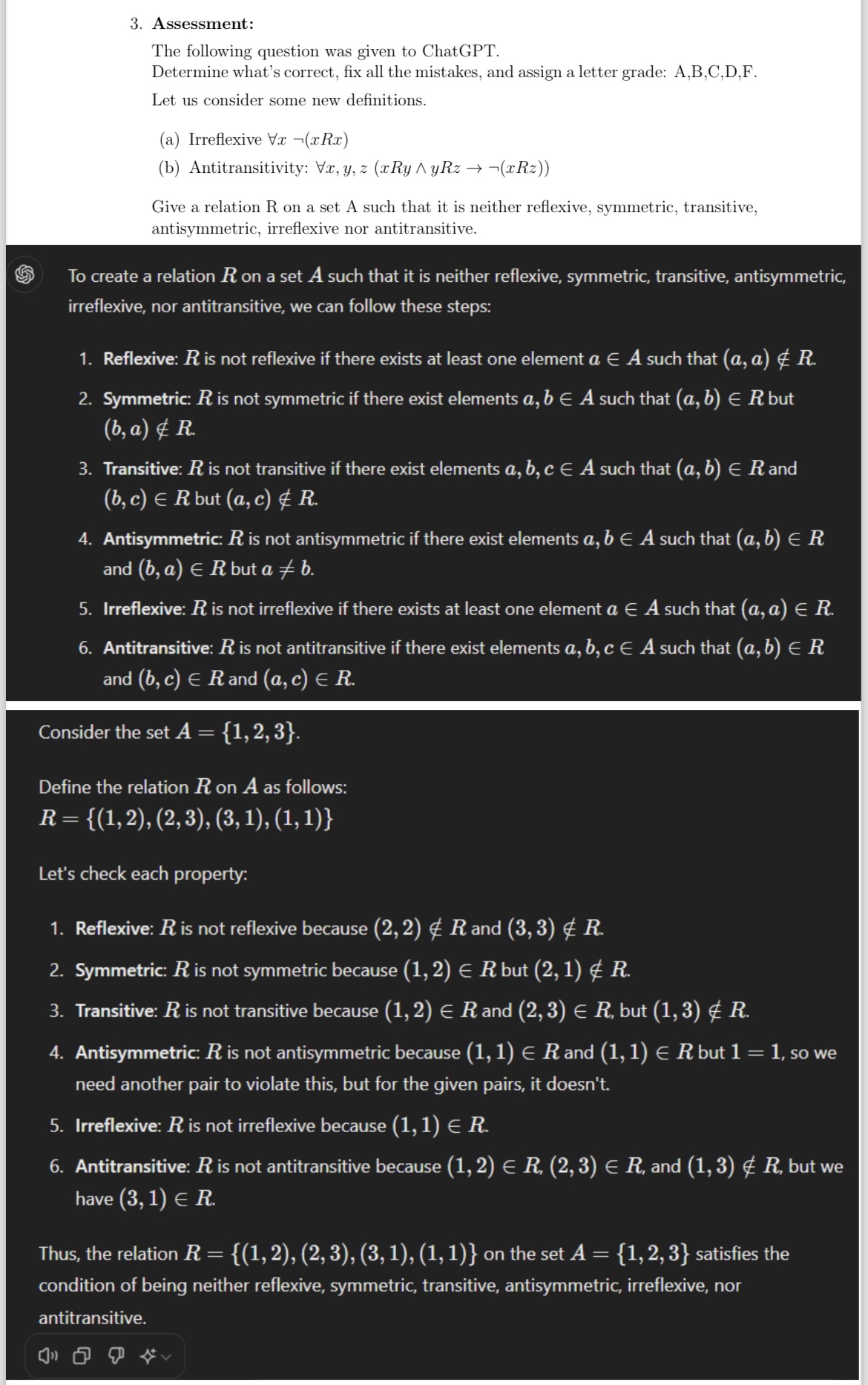(Solved): Assessment: The following question was given to ChatGPT. Determine what's correct, fix all the mist ...
Assessment: The following question was given to ChatGPT. Determine what's correct, fix all the mistakes, and assign a letter grade: A,B,C,D,F. Let us consider some new definitions. (a) Irreflexive
AAxnot(xRx)(b) Antitransitivity:
AAx,y,z(xRy^(^())yRz->not(xRz))Give a relation R on a set A such that it is neither reflexive, symmetric, transitive, antisymmetric, irreflexive nor antitransitive. To create a relation
Ron a set
Asuch that it is neither reflexive, symmetric, transitive, antisymmetric, irreflexive, nor antitransitive, we can follow these steps: Reflexive:
Ris not reflexive if there exists at least one element
ainAsuch that
(a,a)!inR. Symmetric:
Ris not symmetric if there exist elements
a,binAsuch that
(a,b)inRbut
(b,a)!inR. Transitive:
Ris not transitive if there exist elements
a,b,cinAsuch that
(a,b)inRand
(b,c)inRbut
(a,c)!inR. Antisymmetric:
Ris not antisymmetric if there exist elements
a,binAsuch that
(a,b)inRand
(b,a)inRbut
a!=b. Irreflexive:
Ris not irreflexive if there exists at least one element
ainAsuch that
(a,a)inR.
◻Antitransitive:
Ris not antitransitive if there exist elements
a,b,cinAsuch that
(a,b)inRand
(b,c)inRand
(a,c)inR. Consider the set
A={1,2,3}. Define the relation
Ron
Aas follows:
R={(1,2),(2,3),(3,1),(1,1)}Let's check each property: Reflexive:
Ris not reflexive because
(2,2)!inRand
(3,3)!inR. Symmetric:
Ris not symmetric because
(1,2)inRbut
(2,1)!inR. Transitive:
Ris not transitive because
(1,2)inRand
(2,3)inR, but
(1,3)!inR. Antisymmetric:
Ris not antisymmetric because
(1,1)inRand
(1,1)inRbut
1=1, so we need another pair to violate this, but for the given pairs, it doesn't. Irreflexive:
Ris not irreflexive because
(1,1)inR. Antitransitive:
Ris not antitransitive because
(1,2)inR,(2,3)inR, and
(1,3)!inR, but we have
(3,1)inR. Thus, the relation
R={(1,2),(2,3),(3,1),(1,1)}on the set
A={1,2,3}satisfies the condition of being neither reflexive, symmetric, transitive, antisymmetric, irreflexive, nor antitransitive.
